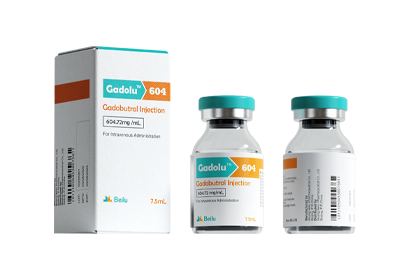Types of Diabetes
According to the classification criteria proposed by the international general WHO diabetes expert committee, it is mainly divided into type 1 diabetes, type 2 diabetes and gestational diabetes, the most common type of diabetes in the general population is type 2 diabetes.
Type 1 diabetes is a condition in which your immune system destroys insulin-making cells in your pancreas. The condition is usually diagnosed in children and young people, they mainly rely on exogenous insulin supplementation to maintain their lives.
Type 2 diabetes (previously called non-insulin-dependent or adult-onset diabetes) is caused by the body's inability to use insulin effectively. The vast majority of diabetic patients are type 2 diabetes, this type of diabetes is mainly the result of overweight and lack of physical activity. Until recently, this type of diabetes was seen only in adults but it is now also occurring increasingly frequently in children.
Gestational diabetes is characterized by high blood glucose levels during pregnancy. It may occur at any time during pregnancy (although most likely after week 24) and usually disappears after the pregnancy.
Oral Hypoglycemic Drugs In Patients With Type 2 Diabetes And Chronic Kidney Disease
Chronic kidney disease (CKD) is a group of clinical syndromes characterized by long-term abnormalities of kidney structure and renal function. The incidence is increasing and has become a major global public health problem. Type 2 diabetes is often associated with CKD, which has become one of the main causes of death for diabetic patients in China. Glycemic control is essential to delay the development of early CKD. Oral hypoglycemic drugs are one of the most commonly used hypoglycemic drugs.
There are many types of oral antidiabetic agents, and the pharmacokinetics of various drugs are significantly different. In addition, CKD patients have a decreased ability to clear drugs or their active metabolites excreted by the kidneys. If oral hypoglycemic drugs are used improperly, they will increase the risk of hypoglycemia and other adverse events. Therefore, it is necessary to fully understand the pharmacokinetics and pharmacodynamic characteristics of various antidiabetic oral drugs in clinical work, and make an individualized selection in combination with the patient's renal function to ensure effective hypoglycemia without increasing the risk of hypoglycemia.
Combination of oral hypoglycemic drugs: Metformin is the first choice for monotherapy in most type 2 diabetic patients. Clinically, a combination therapy based on metformin is often selected. If metformin is contraindicated or intolerant, other therapeutic drugs can be selected, such as combination therapy based on α-glycosidase inhibitor or insulin secretagogue (e.g., sulfonylureas, Glinide). In combination therapy, safety should be considered first and the potency ratio should be considered second. Therefore, priority should be given to oral antidiabetic drugs with potential renal benefits and a lower risk of hypoglycemia.
The prognosis of patients with type 2 diabetes and CKD is worse than that of patients with type 2 diabetes or CKD alone. In clinical practice, oral hypoglycemic drugs for patients with type 2 diabetes and CKD should be correctly selected and used in accordance with domestic and foreign diabetes guidelines, especially for patients with renal insufficiency. Once eGFR<60 mL. Min-1. (1.73 m2)-1, the pharmacokinetic and pharmacodynamic characteristics of some oral hypoglycemic drugs will change in these patients, and the risk of hypoglycemia and other adverse reactions will increase significantly. In clinical practice, the blood glucose and renal function of patients with diabetes and CKD should be closely monitored, and the dosage should be adjusted in time to meet the requirements of hierarchical management of the HbA1c target value of diabetic patients and to reduce adverse reactions.
 Iohexol Intermediate 5-Amino-N,N'-bis(2,3-dihydroxypropyl)-2,4,6-triiodo-1,3-benzenedicarboxamide
Iohexol Intermediate 5-Amino-N,N'-bis(2,3-dihydroxypropyl)-2,4,6-triiodo-1,3-benzenedicarboxamide
 Iohexol/Ioversol Intermediate 5-Amino-N, N'-bis(2,3-dihydroxypropyl)-2,4,6-triiodo-1,3-benzenedicarboxamide
Iohexol/Ioversol Intermediate 5-Amino-N, N'-bis(2,3-dihydroxypropyl)-2,4,6-triiodo-1,3-benzenedicarboxamide
 Ioversol Intermediate (order based) N, N'-Bis(2,3-dihydroxypropyl)-5-(glycoloylamino)-2,4,6-triiodoisophthalamide
Ioversol Intermediate (order based) N, N'-Bis(2,3-dihydroxypropyl)-5-(glycoloylamino)-2,4,6-triiodoisophthalamide
 Iopamidol Intermediate (order based) 5-Amino-2,4,6-triiodoisophthalic acid
Iopamidol Intermediate (order based) 5-Amino-2,4,6-triiodoisophthalic acid
 Iopamidol Intermediate (order based) 5-Amino-2,4,6- triiodisophthaloyl acid dichloride
Iopamidol Intermediate (order based) 5-Amino-2,4,6- triiodisophthaloyl acid dichloride
 Diethylenetriaminepentaacetic acid (DTPA)
Diethylenetriaminepentaacetic acid (DTPA)

 EN
EN
 jp
jp  fr
fr  de
de  es
es  ru
ru  ar
ar 























 Call us on:
Call us on:  Email Us:
Email Us:  No.3 Shuiyuan West Road, Miyun District, Beijing, China
No.3 Shuiyuan West Road, Miyun District, Beijing, China 